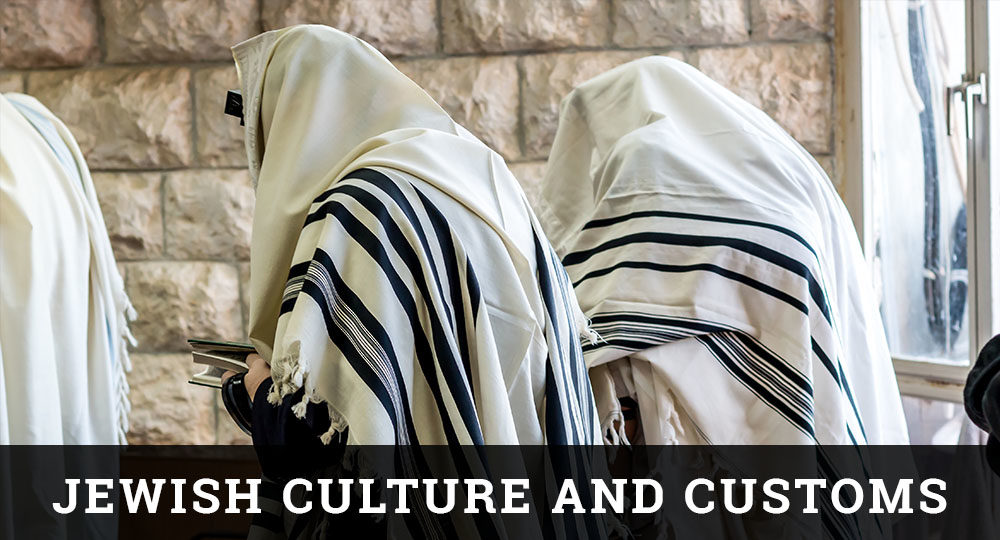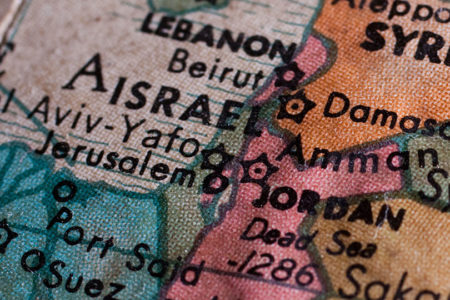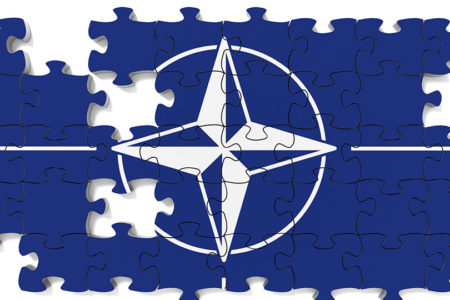Organized for Service
In 1843 twelve Jewish men, each one an immigrant, met on the Lower East Side of New York City. Their purpose was to form an organization to help their own people in need—a type of mutual-aid society. The work they began has endured for more than 150 years, and today the B’nai B’rith (Children of the Covenant) is the oldest service organization among the Jewish people.
Its mission statement appears at the beginning of its constitution.
B’nai B’rith has taken upon itself the mission of uniting persons of the Jewish faith in the work of promoting their highest interests and those of humanity; of developing and elevating the mental and moral character of the people of our faith; of inculcating the purest principles of philanthropy, honor, and patriotism; of supporting science and art; alleviating the wants of the poor and needy; visiting and attending the sick; coming to the rescue of victims of persecution; providing for, and protecting, and assisting the widow and orphan on the broadest principle of humanity.1
Organizing for service has long characterized the fabric of Jewish life. Even in the Bible we see how Moses organized the Israelites according to tribes (Num. 2:2). King David organized the Levites into twenty-four groups for spiritual ministry (1 Chr. 25:6 ff.). And in the early church, which was almost exclusively Jewish, the apostles set apart seven men to minister to the physical needs of that newborn body (Acts 6).
Throughout the world, Jewish people continue to form organizations for service. Some care for religious and spiritual needs while others minister to the physical and social needs of the Jewish people.
B’nai B’rith’s comprehensive mission statement has served it well over the years and has helped guide and focus its work. The ravages of the Civil War in America had left many Jewish children without parents. B’nai B’rith established an orphanage in Cleveland, Ohio, and the leadership of B’nai B’rith helped prevent the expulsion of Jews from some southern states.2
In 1865 B’nai B’rith contributed to the aid of people suffering from cholera in what is today Israel. When a fire devastated the city of Chicago in 1871, B’nai B’rith provided food, clothes, and medical supplies.3 At the turn of the twentieth century, when Jewish immigration to the United States was at its peak, B’nai B’rith was there to organize and assist.
B’nai B’rith has always kept pace with the needs of the people, creating simple but effective outreaches called societies. Coal societies provided coal for families who could not afford to heat their homes. Matzoh societies provided matzoh for Jews who could not afford to purchase it for Passover. Loan societies made money available—interest free—to those in financial need.4 From these emerged more extensive endeavors to help clothe the poor, feed the hungry, aid victims of such disasters as hurricanes, and help survivors of tragedies like the 1995 bombing of the federal building in Oklahoma City.5
Education has also been part of B’nai B’rith’s vision. One of its first projects was to build Covenant Hall in New York City, a forerunner of what we know today as the Jewish Community Center (JCC). Completed in 1851, it housed Maimonides Library, which was used as a Jewish public library.6
Educating future generations of Jewish youth has always been a major concern for many Jewish leaders. To address that issue, B’nai B’rith organized B’nai B’rith Youth Organization (B.B.Y.O.) in 1923. Chapters were started all across the country, consisting of B.B.G. (B’nai B’rith Girls) and A.Z.A. (Aleph Zadic Alef) for boys.
As a teenager, I participated in A.Z.A. Our chapter was called David, after the Israelite king. As required, an adult volunteer served as our leader and advisor. Each chapter was bound by national guidelines that outlined the various activities we could participate in. Our chapter was involved in community enrichment, fund-raising for Israel, nursing home visitation, and social and religious activities. These activities gave us a sense of pride, both as Jews and Americans. Today approximately 30,000 high school-aged people are involved in B.B.Y.O.7
Born from its desire to continue to work with students after their high school years, B’nai B’rith formed the Hillel organization to work among the college aged. Hillel first made itself available to the 400 Jewish students at the University of Illinois in 1923. Since then it has grown into the largest international Jewish campus organization in the world.
Since Bible times, persecution has been a fact of life for the Jewish people. So B’nai B’rith set up the Anti-Defamation League in 1913 to protect the Jewish people whenever they are attacked or slandered.8 Today many regard the ADL as the leading advocate in the fight against anti-Semitism in the United States.
Most Jewish people have always highly valued education, but they often were barred from admission to institutions of higher learning simply because they were Jewish. In 1880 a group of Jewish Russians received permission from the czar to start agricultural schools to train and feed Russia’s five million Jews living in poverty. The Society for Trades and Agricultural Labor was established, known the world over as ORT, the acronym for its Russian name, Obschestvo Remeslenovoi Zemledelcheskovo Trouda.9
For the next twenty-five years, in spite of an anti-Semitic Russian government, ORT successfully trained 25,000 Jews in 350 towns. After World War I, ORT expanded into other Eastern European countries. Each chapter established trade schools to train people for skilled jobs. A branch was opened in Brooklyn, New York, in 1927. Soviet dictator Joseph Stalin shut ORT down in the Soviet Union in 1938; but fifty-two years later, with the collapse of Communism, it was revived in that country. Today the countries of the former Soviet Union have twenty-two ORT schools that provide much-needed technical training.10
In 1948, in the fledgling State of Israel, ORT opened a school in Tel-Aviv. At least 100,000 Jewish, Arab, and Druze students today attend 140 schools and colleges in fifty-three communities. ORT is a nonsectarian and nonpolitical organization that oversees a global network of schools teaching more than 280,000 students in more than sixty countries.11
Of all the many Jewish organizations around the world, Hadassah is perhaps the most familiar one. To appreciate Hadassah’s contribution to modern society, listen to these words of Scripture, read at the memorial of Hadassah’s founder, Henrietta Szold:
I was eyes to the blind, and feet was I to the lame. I was a father to the poor; and the cause which I knew not I searched out. And I broke the jaws of the wicked, and plucked the prey out of his teeth (Job 29:15–17).12
Daughter of a Baltimore rabbi, Henrietta Szold associated herself with the Daughters of Zion, a group of women interested in the establishment of a homeland for the Jewish people. She became appalled at the living conditions in Palestine when she visited there in 1912. Disease was rampant and sanitary conditions poor for both Arabs and Jews. Shortages of doctors, nurses, and hospitals exacerbated the situation.
When Henrietta Szold returned to the United States, she almost immediately began a new chapter of the Daughters of Zion. Calling it Hadassah after the Hebrew name of Queen Esther in the Bible, she embarked on a mission to raise money to send medical supplies and personnel to help the Palestinian Jews and Arabs. These women met regularly at Temple Emanu-El in New York City. In the first year, they raised $930. In 1913 the chapter sent two American public health nurses to begin a maternity center that also treated children with trachoma.13 In 1918 forty-four physicians, nurses, sanitary engineers, dentists, and administrative staff set sail for Palestine. The money was gathered with the help and sponsorship of Hadassah and the Joint Distribution Committee.14
Hadassah’s crowning achievement, however, came in 1939 with the completion of a hospital bearing its name on Mt. Scopus in Jerusalem. Yet fewer than ten years later, in 1948 during the Israeli War of Independence, tragedy struck when the Arabs massacred seventy-eight doctors and nurses as their medical bus passed through an Arab neighborhood en route to the hospital. From 1948 to 1967, the hospital found itself situated in an Arab-controlled area and was virtually cut off from the rest of Israel.
Ein Kerim, a new medical facility, was begun and completed on the west side of Jerusalem. Today Ein Kerim is a 700-bed facility that serves as a hospital and research facility dealing with bone marrow transplants; heart, lung, and liver transplants; laparoscopic surgery; cold laser surgery; and gene therapy.15 The Hadassah Hospital at Mt. Scopus now has 300 beds and serves both Jews and Arabs.
An advertisement for Hadassah appeared in the October 2000 issue of The Jerusalem Report, an international magazine. It summarized the function of the organization, now 300,000 women strong. “With hundreds of Hadassah-sponsored programs in Israel, ranging from health care to education, youth at risk, and land development, the proud volunteers of Hadassah have chosen this year, 5761, to rededicate ourselves to the Jewish state, the Jewish people and the Jewish future.”16
Interestingly, The Friends of Israel Gospel Ministry was also organized to serve the Jewish people. Begun as a relief society to help Jewish people fleeing Nazi persecution in 1938, The Friends of Israel has maintained a friendship with Israel and the Jewish people for more than sixty years, and we still send various forms of aid when it is needed. Although we are an evangelical Christian organization, we are, nonetheless, unequivocally committed to helping and supporting Jewish people and their biblical, God-given right to live in the land given to their forefathers.
These are but a few of the many fine Jewish organizations that were organized for service and have benefited countless numbers of people—both Jewish and Gentile—over the years.







